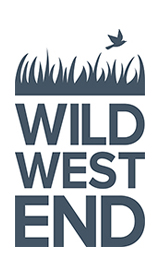Citizen Science and Biodiversity
Increased connectedness and demand for data, inexpensive sensor technologies, and a call for improved scientific transparency and accessibility has spurred the development of the citizen science movement.
Citizen science is a collaborative scientific method which brings the public into scientific research by developing projects based on participation by the public. The term was coined in the mid-1990s by sociologist Alan Irwin, defining it as “science which assists the needs and concerns of citizens” and as “a form of science developed and enacted by the citizens themselves”.
Boosting Biodiversity Research
Participation in citizen science may include a variety of tasks such as project design, data collection and data analysis. It is a growing movement, both in terms of reach and in terms of content. In recent times, there has been growing participation for biodiversity and ecology monitoring for flora and fauna.
For biodiversity, citizen science presents a number of possibilities. It enables data to be gathered at a large spatial and temporal extent, and fine resolution. Citizen science can present opportunities to conduct research which would not be possible otherwise, such as global projects where data collection would require immense resources without public engagement. It also engages people directly with environmental issues in their local environments.
Citizen Science Initiatives and Wild West End
Wild West End actively promotes and collates information on citizen science opportunities and spread information on why people should, and how people can, get involved through our social media channels and out partner initiatives. Wild West End promotes a number of initiatives including the Garden Birdwatch, Bee Walk, Big Bug Hunt, Big Garden Birdwatch and Big Butterfly Count. Birds and invertebrates are both Wild West End target species, meaning that the initiative specifically tailors measures to promote these, and that there is targeted monitoring in place, measuring how their numbers are changing. You can read more about the target species of Wild West End under the Target Species tile.
To take part in and contribute to the work of Wild West End outside of recognized citizen science initiatives and awareness days, snap a picture of any sightings you make on land included in the Wild West End partnership, and send it together with details of the sighting such as species and location to us at info@wildwestend.london.
Opportunities
Citizen science present opportunities to collect large amounts of data and provide situations to gather and analyse data that are outside the scope of conventional science. Research that involves the public can also be more contextually sound, which can lead to broader support. When citizen science includes the active participation and expertise of citizens, it can create a stronger engagement with the data by the community, compared to if similar findings were presented by a scientific entity. Further, when science is driven by questions which are important to the concerned communities, it is more likely that it will spur environmental action.
You can contribute directly to the work of Wild West End by sending us your sightings, which we will plot on our green space map. We look forward to working together collectively for people and nature.
Citizen Science Initiatives:
Big Bug Hunt: Year-round
Garden Birdwatch: Year-round
Bee Walk: March - October
Big Butterfly Count: 17 July – 9 August
Big Garden Birdwatch: Last weekend of January









